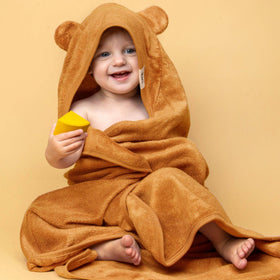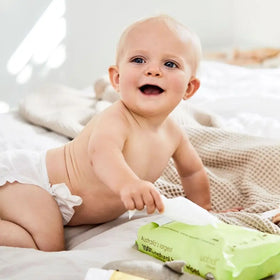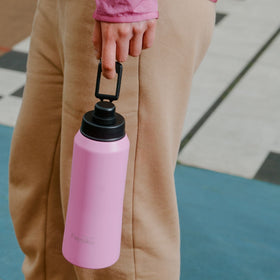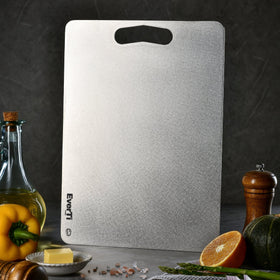
Eco Nappies: Are They Really Biodegradable?
We had a customer ask us the other day whether a particular brand of eco nappies that we stocked were biodegradable. Now, this sounds like a straightforward question, but it's actually a bit of a tricky one to answer. First of all, what does biodegradable mean?
Wikipedia defines biodegradable as any organic matter:
"which can be broken down into carbon dioxide, water, methane or simple organic molecules by micro-organisms and other living things using composting, aerobic digestion, anaerobic digestion or similar processes"
So are eco nappies biodegradable? In short, no.
It's commonly thought that eco nappies are biodegradable. They're not. They have elastic around the legs, velcro style tabs, and SAPs (absorbent gels) for starters, and none of these are fully biodegradable. There is no disposable nappy in the world that is 100% biodegradable.
Yes, parts of a disposable nappy are biodegradable. Some disposable nappies have an absorbent core made with wood pulp, which is biodegradable. Others are made with bamboo, which is biodegradable.
But there's more to a disposable nappy than just the absorbent core. The 'cloth like' backsheet is usually made with a breathable plastic (or at least partly), so that the baby doesn't leak. The tabs, the elastic, the gel - none of these break down fully.
I've seen nappies advertised as being 'biodegradable' when they're clearly not. It's misleading to say that a nappy is biodegradable, when what the manufacturer means is that they're partly biodegradable or made with some biodegradable ingredients.

Why biodegradability isn't important anyway
People make the mistake of thinking that the biodegradability of a product is what makes it eco friendly. But most of the environmental impact of a disposable nappy come from how it's made. That happens before it even gets to you.
While biodegradability is important, the reality is that the vast majority of nappies end up in landfill. Landfill is anaerobic (meaning that there is no light or air, necessary for the decomposition process). Without light and air, the decomposition process is very slow. In fact, archaeologists in London found a banana skin in a rubbish dump dated to 1460!
Even aside from the fact that no disposable nappy is fully biodegradable, any nappy that claims to be biodegradable only biodegrades if it is composted, not if it is thrown into landfill. Only looking at the biodegradability of a product is like asking whether your food is biodegradable. An apple is biodegradable, and so is a deep fried Mars Bar, but only one of them is any good for you!
When you're trying to reduce your eco footprint, it's important to look at the entire life cycle of the product you choose, rather than just a single factor. This is called the 'cradle to grave' impact.
That's what independent eco labels look for when they're certifying products.
What makes an eco disposable 'eco'?
As much as 85% of the environmental impact from a disposable nappy is related to its raw material. That means how it's grown or produced, how it's processed and the waste left behind after the processing. So there's a lot to think about even before you get to the nappy's disposal.
Both Bambo Nature nappies and Muumi nappies are certified by the Nordic Swan Eco Label. Bambo Nature and Moltex nappies are also certified by the EU Ecolabel. Both these eco labels assesses a product’s environmental impact during its entire life cycle, from raw materials and manufacturing, through to the nappy’s use and finally the disposal. To be certified by the these independent, government run labels, the nappy must reach strict targets on:
- energy and resource consumption
- factory emissions into air, water and land
- limits on the creation of waste products
- the content of environmentally hazardous substances in the product
- anything that may be hazardous to humans
Nappies are just like any other eco product. Don't be swayed by the greenwash on the front of the pack. As with any 'green' claims, ask the manufacturer to show you the results of independent testing. Dig a little deeper, and you'll make better choices - both for your baby, and for the planet.










